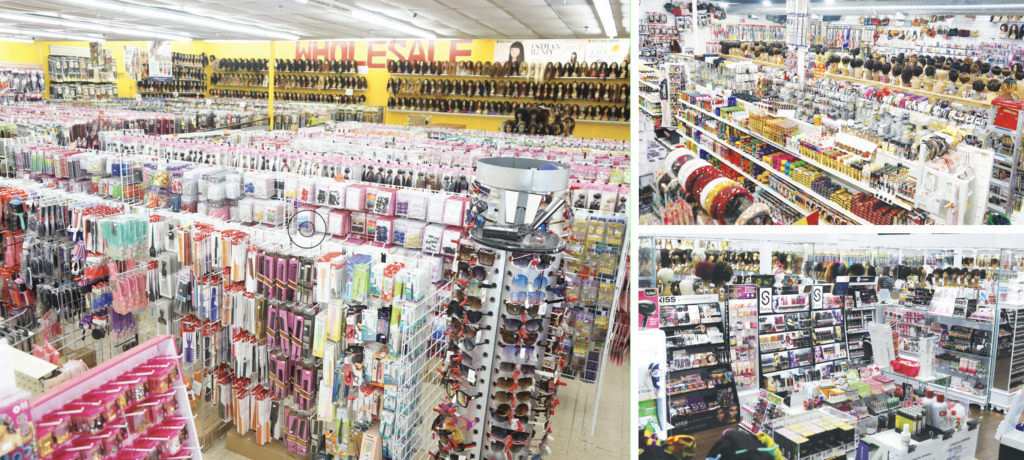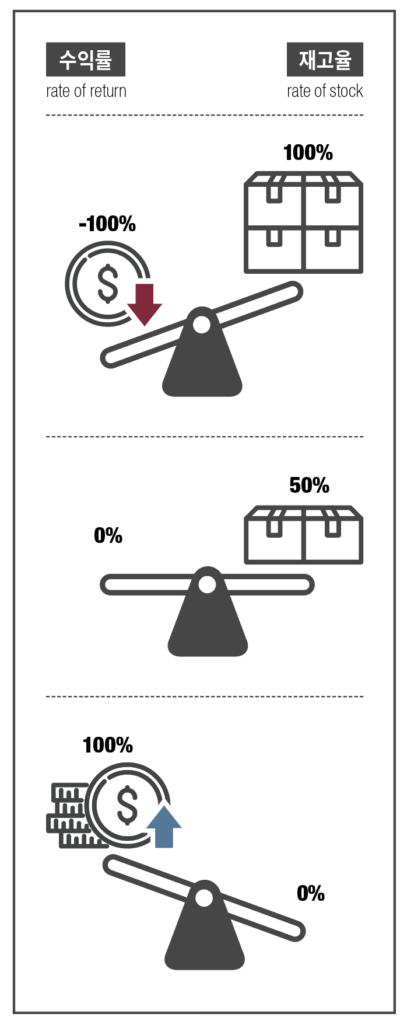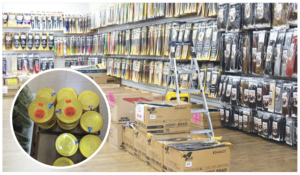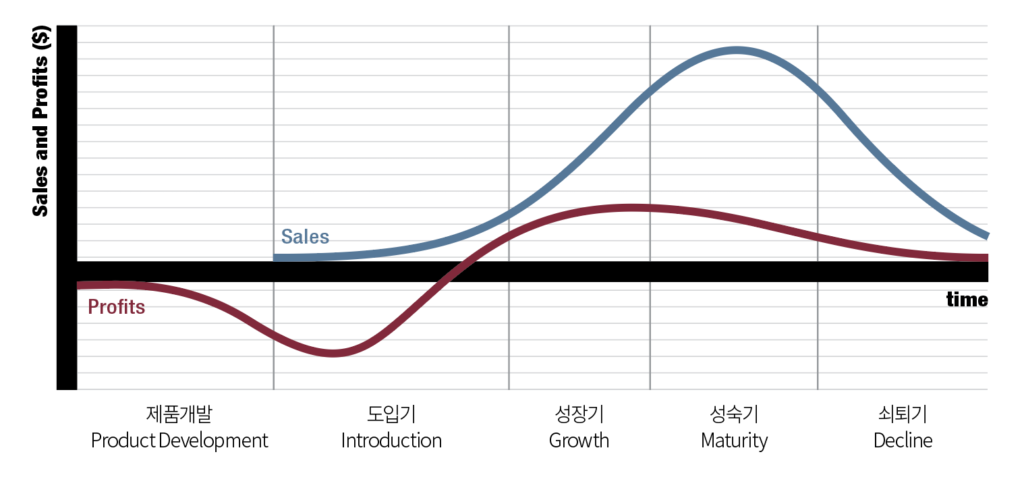Inventory Management Tips for 2023
Part 1. Taking Care of Obsolete Inventory
Inventory is not a one-size-fit-all terminology. When an item is discontinued or no longer expected to sell, it becomes obsolete inventory. While you should maintain a certain level of inventory to prevent items from going out of stock, you do not want to have obsolete inventory in your storage or warehouse. Obsolete inventory causes a good amount of headache for retail business owners. Increasing the volume of sale does not necessarily mean more profit. In fact, keeping a low level of obsolete inventory more often leads to success. New wine must be poured into new wineskins. BNB will discuss inventory management tips for the new year in two parts: (1) how to clear up obsolete inventory and (2) how to manage inventory efficiently.
BY BNB MAGAZINE
“Inventory management is impossible for beauty supplies.”
“When in the world can you count all the items? We’re just too busy.” “A beauty supply carries at least a few thousands of items, and a complete inventory of these merchandise is impossible. Not to mention we don’t have enough staff nowadays.” When asked about inventory management, managers and owners expressed how difficult it was.
In fact, a beauty supply carries a wide range of merchandise. From the main hair products and chemicals to cosmetics, jewelries, clothes, and accessories, it literally supplies beauty to customers. It is not easy to make a complete list of all merchandise to begin with, and having a handful of employees to run a business means you are prone to give up on counting the items sold and in stock and inventory them regularly, unless you have a robot roaming around the floor all day.

Display in a beauty supply. While the size and look of a store varies, every beauty supply is packed with merchandise.
There are businesses who do inventory regularly despite all these. On the extreme end, a beauty supply store in the East told BNB that they inventoried all hair products once a week. To place orders based on the exact counting, they do this, but on the inventory day, all employees are to perform inventory and customer service can easily become the second priority. This happens when you only do a single category of inventory. Now, if you do the whole inventory, you would probably spend half your business hours counting goods. As such, you can see why some business owners proclaim that inventory management is impossible for beauty supplies.
Why in the world should you still do inventory?
Identifying the invisible thief in your business 
Let’s say you order 100 pieces at $5 each, and sell them at $10 a piece. What’s your margin? It’s easy math. You will earn $5 each, so 50% of your sales revenue goes to your pocket. The profit margin is admirable.
However, that is not the full story. You have 100 pieces to sell, not just one. You need to sell all of your stocks to get a 50% margin at the end. If you only sold 75 out of 100, and 25 became obsolete inventory, you only achieved 25% margin. If you sold 50 only, then you are even. You will lose money if you sell less than 50 pieces. To achieve the maximum margin per your resell price, you must have zero inventory at the end of the product life, but that rarely happens. Even for a very popular product, you will have less popular sizes, types, and colors, so you will be left with around 10-30% of the purchased goods unsold. You will have different scenarios for different product categories. When you order ten items, you have to think about how many of the ten will sell as expected.
Another thing to consider is the overhead. We only calculated gross profit so far, and you have to deduct the rent, payroll, and so on to get net profit. Hence, even if you buy a product at $5 a piece and sell it at $10 a piece, you will have 15-25% profit at most after deducting the obsolete inventory and expenses.
Many retail business owners think about selling more goods but not about leaving less goods unsold. This is when you, after making good sales, keeping the sales floor busy, selling at a good profit margin, still end up with a low or negative balance in your bank account. The clue is in your inventory. If you do not manage inventory properly, it often leads to your business going south despite hard work.

All businesses have obsolete inventory. Once merchandise starts to pile up in the warehouse, it is hard to keep accurate inventory.
The first step to inventory management: clearing obsolete inventory
You will likely be able to identify age-old inventory somewhere in your storage or warehouse. They are often 10 or 20 years old. The age-old inventory often creates dilemmas for retail businesses. They do not sell at the original price, but you do not want to sell them at loss. If you want to go great lengths to sell them, it often leaves no profit after the time and resources spent. You know they need attention but do not want to bother them, and they eventually get lost in your memory. So, some people call them “dead” stock.
Do you really lose money when you sell them at discounted prices? Dead stock takes up your space and does not generate revenue. If you paid for them already, your cash flow is stuck while they stay on your shelves. It costs money to maintain them, too.
Inventory carrying cost
Interest and opportunity cost: the money you spent on procuring items is either loaned or money you could possibly have spent on other items. This is the biggest part of your inventory carrying cost.
Storage and maintenance cost: inventory takes up space, and your storage space is limited resource that costs you substantial storage and maintenance fees. If you have potential valuable use for the space, you have an opportunity cost, too.
Taxes, insurance premium, and spoilage: If you have a large inventory, your taxes and insurance costs go up. Some businesses suffer from high loss due to the theft conducted by shoplifters and employees. Decreased demand can reduce the value of the inventory, and some products deteriorate in quality over time.
This is precisely why you can possibly save money by selling items below the procurement cost in the long run. As small cracks can lead to big problems, obsolete inventory is taking away your profit margin little by little. If you identify an item as obsolete, it is better to get rid of them quickly. Carrying them often leads to bigger loss at the end. Unfortunately, you cannot simply sit and wait till the obsolete inventory goes. You need a plan to take care of them.
Effective marketing strategy to get rid of obsolete inventory
Placing them in a high traffic area
If you simply put away your obsolete inventory and leave it in a corner covered with dust, it will never sell. It is often a great strategy to have your busiest aisles occupied 80% by popular products or best sellers and 20% by less popular items. If you offer a discount or 1+1 promotion, you want to post how much customers can save in big letters.
Bundling items
Another great strategy is to bundle your unpopular items with popular items at a discounted price. You can use the popularity of some items to avoid big losses in obsolete inventory. However, you should bundle items that give some benefit to customers when purchased together.

Limited discount
You can limit your discount to specific time, quantity, and a consumer group to stimulate the purchase desire of your customers. Typically, you discount an item for a limited time period, but you can also apply a discount to customers who visit your store at a specific hour. You need to play the game with your customers.
Free gifts
You might think that giving away items for free would always lead to loss, but there is another side of the calculation. You can offer the free gift to customers who make a purchase over a certain amount or quantity (possibly varying gifts per the amount/quantity), and your customer may spend more money than planned to make the cut. Another way is to give a gift in exchange for referring a friend.
Offering a prize
You can run promotional events such as roulette, dart throwing, and lotteries to give out merchandise as prizes. Dead stock can relive their life as a pleasant surprise for customers. You will not only entertain your customer but also attract more customers by word of mouth.
Clearance event
In a beauty supply in Philadelphia, a seasonal clearance event is held during off season on a side of a parking lot to clear out the inventory and also to bring more customers to the store. It is only an example of a bold execution that is needed for inventory management.

This is only the beginning of inventory management.
Setting your ‘optimal inventory’ levels
If you have cleared up the inventory, then it is time for a plan to maintain its efficiency. The key to efficiency is to set an optimal level of inventory and maintain it. What is the optimal inventory level for you? Ideally, you want zero inventory. However, unless the business is 100% make-to-order, there is no business without inventory. However, you would know the minimum inventory level which can be the baseline to run your business.
If you have too much inventory, it will lower your profit. If you have too low inventory, you will lose your customers’ loyalty. Having enough inventory can expand your range of offering and boost customer satisfaction while having low inventory can improve cash flow and reduce obsolete inventory. You need to find a balance to compete in the market and serve your business well and make an effort to keep the optimal level.
When to act
Once you fully pay for your ordered goods, your merchandise is your asset. But the inventory is obviously not cash. Each item in the inventory has its own life cycle. While cash does not lose its value over a short period of time, inventory depreciates quickly. No product is forever popular. Even the most popular products will lose their shine someday, and customers will lose interest. Generally speaking, every product goes through the following four stages from its release to disappearance.
Product Life Cycle

Introduction: the product is released in the market and starts to sell
Growth: the popularity grows dramatically and the product starts generating profit
Maturity: the peak profit is achieved. Simultaneously, competing products will enter the market and hinder the sales, and less competitive products will be discontinued.
Decline: the market is saturated or consumer demand decreases. The product loses its market, and the sales and profit decrease. You need to consider reduction or removal of inventory.
Each product has varying length of stages depending on the type, marketing and promotional period, marketing strategy and so on, but typically products carried by beauty supplies have a short lifespan. Seasonal items usually have a shorter life cycle, and once the season ends, it becomes less desirable immediately. You need special care for them. You should be highly sensitive as your product goes through each stage and have flexible plans ready.
Inventory management strategy for seasonal products
Introduction: you need an eye-catching display before the season starts and promote sales early
Growth/maturity: keep your eye on inventory level to keep your items in stock. During the season, the competition is fierce and customers will not hesitate to go to another store for purchase.
Decline: to prevent loss, you need to reduce inventory level timely. If you keep a high inventory level based on the past performance, you will likely carry the items to the next season or turn them into obsolete inventory.
How do you know when to increase/decrease inventory level? You should rely on the previous performance data. Know how the sales went in the past seasons, what your current inventory level is, predict future sales, and then make a plan to keep an optimal inventory level. If you have not spent time on inventory in the past, you have no data to forecast the future demand. When you have to simply guess, the business becomes a bold investment relying exclusively on intuition.
In the coming February issue, we will discuss more detailed techniques including inventory software for efficient management, ordering strategies for optimal inventory level, and so on in the Part 2 of Inventory Management Tipsfor 2023.